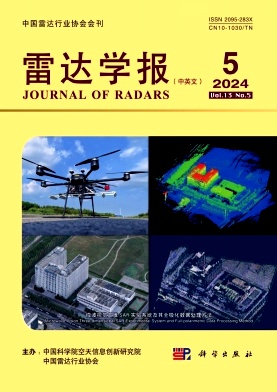Performance Analysis on ISAR Imaging of Space Targets
Q2 Physics and Astronomy
引用次数: 6
Abstract
Usually, in traditional Inverse Synthetic Aperture Radar (ISAR) systems design and mode selection for space satellite targets, coherent integration gain in azimuth direction hardly can be analyzed, which depends on target’s motion. In this study, we combine the target orbit parameters to determine its motion relative to radar and deduce coherent integration equation in ISAR imaging to realize the selection of imaging intervals based on coherent integration, which can ensure the resolution in azimuth direction. Meanwhile, we analyze the influence of target orbit altitude to echo power and imaging Signal-to-Noise Ratio (SNR) that provides a new indicator for space observation ISAR systems design. The result of simulation experiment illustrates that with target orbit altitude increasing, coherent integration gain in azimuth direction of large-angular observation offsets the decreasing of imaging SNR in a degree, which provides a brand-new perspective for space observation ISAR systems and signal processing design.空间目标ISAR成像性能分析
通常,在传统的空间卫星目标反相合成孔径雷达(ISAR)系统设计和模式选择中,很难对目标方位方向的相干积分增益进行分析,这取决于目标的运动。本研究结合目标轨道参数确定其相对于雷达的运动,推导ISAR成像中的相干积分方程,实现基于相干积分的成像间隔选择,保证在方位角方向上的分辨率。同时,分析了目标轨道高度对回波功率和成像信噪比的影响,为空间观测ISAR系统设计提供了新的指标。仿真实验结果表明,随着目标轨道高度的增加,大角观测方位角方向相干积分增益在一定程度上抵消了成像信噪比的下降,为空间观测ISAR系统和信号处理设计提供了全新的视角。
本文章由计算机程序翻译,如有差异,请以英文原文为准。
求助全文
约1分钟内获得全文
求助全文
来源期刊

雷达学报
Physics and Astronomy-Instrumentation
CiteScore
4.10
自引率
0.00%
发文量
882
期刊介绍:
Journal of Radars was founded in 2012 by the Institute of Space and Astronautical Information Innovation of the Chinese Academy of Sciences (formerly the Institute of Electronics) and the China Radar Industry Association (CRIA), which is located in the high-end academic journal and academic exchange platform in the field of radar, and is committed to promoting and leading the scientific and technological development in the field of radar. The journal can publish Chinese papers and English papers, and is now a bimonthly journal.
Journal of Radars focuses on theory, originality and foresight, and its scope of coverage mainly includes: radar theory and system, radar signal and data processing technology, radar imaging technology, radar identification and application technology.
Journal of Radars has been included in domestic core journals and foreign Scopus, Ei and other databases, and was selected as ‘China's high-quality science and technology journals’, and ranked the first in the category of electronic technology and communication technology in the ‘Chinese Core Journals List (2023 Edition)’.
 求助内容:
求助内容: 应助结果提醒方式:
应助结果提醒方式:


